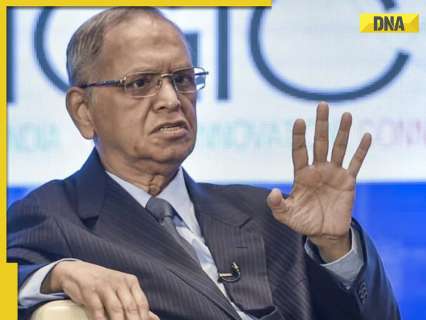The monsoon has arrived more than a week in advance, giving a respite from the intense heat in India. A heatwave gripped India in early April, though heatwave conditions were observed as early as February 27–28 as large parts of the country witnessed temperatures soar.
Heatwaves could have a drastic impact on the economy. In a report in 2024, the International Labour Organization (ILO) warned that more than 70% of all workers worldwide are at risk of exposure to excessive heat. It added that India lost an estimated $100 billion from heat-induced productivity losses. Small businesses and informal workers like construction workers, farmers, street vendors and food delivery partners bore the brunt.
Excessive heat can have a devastating impact on agriculture. Studies show that just 1 degree of warming reduces wheat yields by about 5.2% in India. Heatwaves, late in the rice growing season, can reduce yield.
Indians at risk
Heatwaves, a period of unusually high temperatures compared to normal, occur mainly from March to June and hit a peak in May. Most States are prone to heat waves in varying degrees with Central, Northwest, East & north Peninsular India bearing the brunt.
A recent report by CEEW states that about 57% of Indian districts, which account for 76% of the country’s population, face a high to very high heat risk. Delhi, Maharashtra, Kerala, Gujarat, Rajasthan, Tamil Nadu, Andhra Pradesh, Madhya Pradesh, and Uttar Pradesh face the highest heat risk. It notes that over the last 40 years (1981–2022), heat extremes in India have increased linearly. This led to landmark heatwaves in 2013, 2016, 2019, 2022, and 2024.
“Nearly 23 States are heatwave-prone in India. There has been a linear increase in the number of very hot days and the number of very warm nights,” said D.r Vishwas Chitale, Senior Programme Lead, CEEW, who noted that the rate of increase in warm nights exceeds that of hot days.
Rapid urbanisation has only exacerbated the issue as cities tend to retain heat during the day, which delays cooling after sunset, making nights warmer. This contributes to the “urban heat island effect”, where cities get hotter than neighbouring rural areas. The CEEW report noted that between 2005 and 2023, built-up areas have expanded rapidly in almost every Indian district, especially in Tier-II and Tier-III cities like Pune, Thoothukudi, Kolhapur, and Guwahati. “You’re not getting any relief from the daytime hot temperature even when you sleep at night. If there are no cooling mechanisms available to you, then your productivity is going to go down,” he said.
A 2022 World Bank report points out that up to 75% of India’s workforce, or 380 million people, depend on heat-exposed labour, potentially working in life-threatening temperatures. It also noted that 34 million of the projected 80 million global job losses from heat stress-related productivity decline would be in India.
“The income losses for workers in the informal sector are likely to be greater as they are more likely to work outdoors and have less protection from heat,” Dr. Somanathan, Professor, Economics and Planning Unit, Indian Statistical Institute, said. “Net earnings of informal sector workers in Delhi were 40% lower during heatwaves compared to other days in May and June. They were also less likely to be able to go to work due to heat, slept less and less well, and were more likely to have a family member who was sick on hotter days,” he said.
Blue-collar workers in factories also suffer. Dr. Somanathan’s 2021 study revealed a slowdown in productivity and increased absenteeism during hot days. “A 1 degree of warming is estimated to reduce manufacturing output by about 2%,” he said, adding that the losses will increase as the severity of heat waves increases due to global warming. Ironically, the solution lies in ensuring that productivity increases. “Increasing productivity is the best thing that can be done to protect workers because employers are more likely to invest in cooling for more productive than less productive workers,” he said.
In rural India, heatwaves hit differently. “Typically, there is little agricultural activity in the peak of summer. But the summer season is also the season for a lot of non-farm activity. A large number of agricultural workers, and even farmers, go to work part-time in sectors like construction or road building, especially in the lean season,” Dr. T. Jayaram, Senior Fellow, Climate Change, MSSRF, said. “Construction activity heats up, and road building also attracts labourers, and they are prone to the direct risks,” he added.
He noted that livestock are vulnerable to heat waves. “A combination of factors, including temperature and humidity, are at play, and if it crosses a threshold, livestock will suffer. There are guidelines for this, but enforcement is an issue as most of the small and medium farmers are spread across the country,” he said.
Heatwaves cause more damage when combined with other factors like an ongoing drought or food shortage. “Abnormally high temperatures in other parts of the year, like in early March or late October, can have an impact on crops and productivity in the field,” he noted.
Dealing with heatwaves
Governments, both at the Central and State levels, is taking action. For example, the National Disaster Management Authority, in collaboration with the Union Ministry of Home Affairs, published guidelines for protecting the Indian workforce. These guidelines, which stress on providing education and regulating work schedules, providing water, medical facilities and appropriate workwear, can be used by officials preparing heatwave action plans for the cities and towns.
Several States and cities have their own heat action plans, with some cities making plans down to the ward-level to implement solutions on the ground.
“Heat action plans change from city to city. There are these matrices, which have been defined by NDMA, which include short-term responses like making water available at public places, providing shelters like a cool bus stop. Then, there are also long-term mitigation measures, which might include activities like urban greening or increasing the water bodies within the city. In Chennai, for example, authorities mapped out urban heat islands within the city and have incorporated that data in their master plan,” Dr. Chitale said.
Currently, the focus is mostly on urban areas. “Urban areas are at a higher risk because of the population that they host. Nearly 76% of India’s population lives in 57% of districts [and they are susceptible to the risks],” Dr. Chitale said. He noted that the healthcare infrastructure in rural areas is relatively weak. This puts Indians in rural areas at risk of health-related disorders. “Given the quality of housing, and the availability of amenities such as water, sanitation, electricity etc., the impact on the [rural] population can be quite severe,” Dr. Jayaram said.
While States can tap into their State Disaster Management Fund to meet immediate funding to tackle intense heat waves, the focus should be on long-term solutions. “States should be planning strategically to make investments to protect people,” Dr. Somanathan noted. “When it comes to cities, they need to get a heat action plan. Then, you can start building on further with solutions and interventions. Of course, cities can allocate certain funds for implementation of heat action plans,” Dr. Chitale said.
Dr. Jayaram said there should be a way to compensate workers who stop work due to the heat. “People are experimenting with insurance, for instance, in parts of the country, where workers pay a small sum towards the premium. When a heat wave is declared and work is stopped, they get compensation,” he said, but noted that implementation would be a problem.
Published – June 02, 2025 04:18 pm IST























